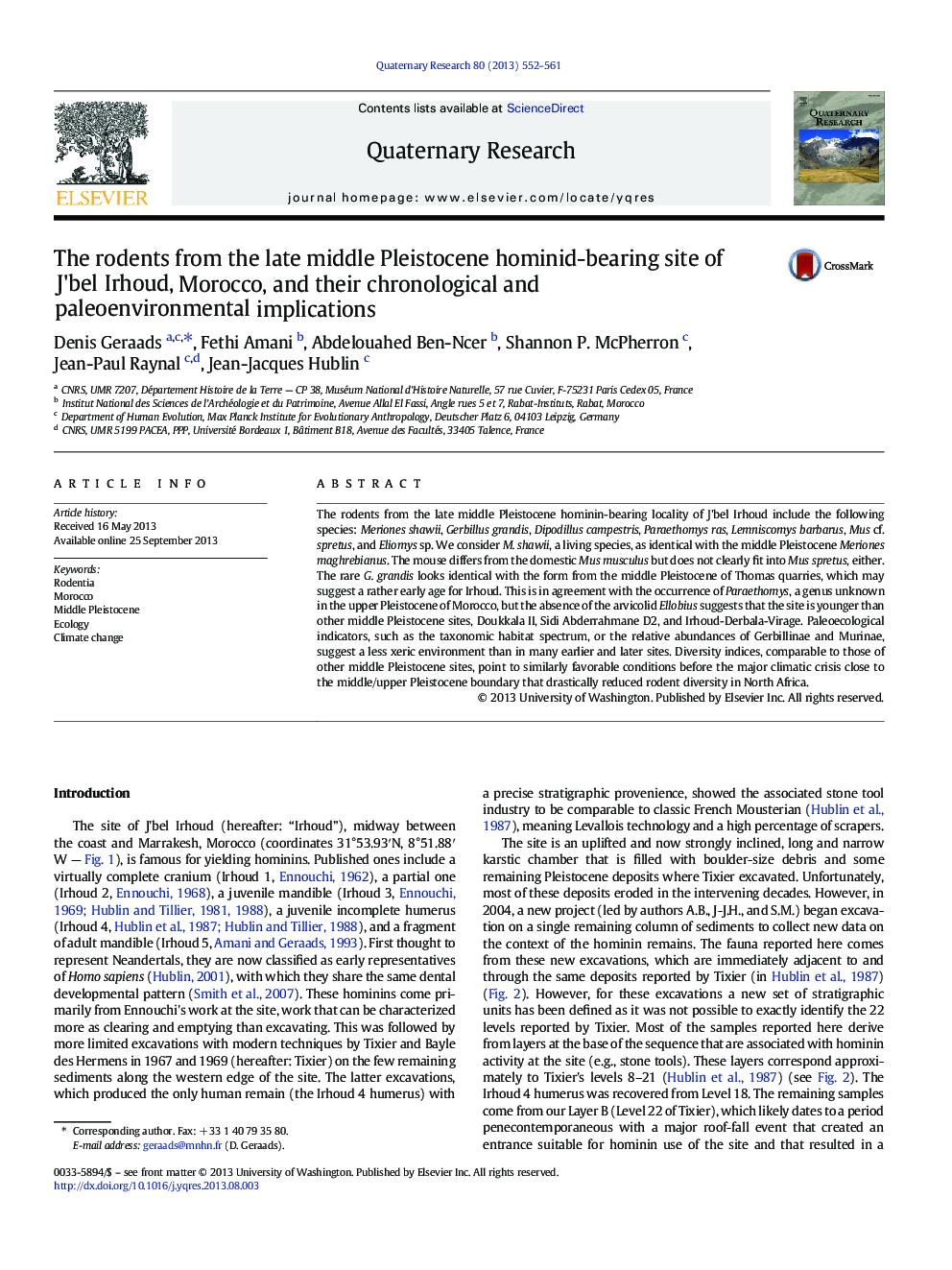| Article ID | Journal | Published Year | Pages | File Type |
|---|---|---|---|---|
| 1045301 | Quaternary Research | 2013 | 10 Pages |
The rodents from the late middle Pleistocene hominin-bearing locality of J'bel Irhoud include the following species: Meriones shawii, Gerbillus grandis, Dipodillus campestris, Paraethomys ras, Lemniscomys barbarus, Mus cf. spretus, and Eliomys sp. We consider M. shawii, a living species, as identical with the middle Pleistocene Meriones maghrebianus. The mouse differs from the domestic Mus musculus but does not clearly fit into Mus spretus, either. The rare G. grandis looks identical with the form from the middle Pleistocene of Thomas quarries, which may suggest a rather early age for Irhoud. This is in agreement with the occurrence of Paraethomys, a genus unknown in the upper Pleistocene of Morocco, but the absence of the arvicolid Ellobius suggests that the site is younger than other middle Pleistocene sites, Doukkala II, Sidi Abderrahmane D2, and Irhoud-Derbala-Virage. Paleoecological indicators, such as the taxonomic habitat spectrum, or the relative abundances of Gerbillinae and Murinae, suggest a less xeric environment than in many earlier and later sites. Diversity indices, comparable to those of other middle Pleistocene sites, point to similarly favorable conditions before the major climatic crisis close to the middle/upper Pleistocene boundary that drastically reduced rodent diversity in North Africa.
